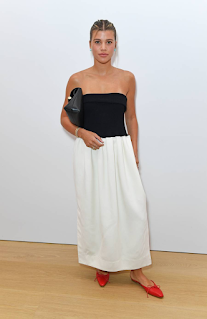Saint Laurent is considered one of the most revolutionary and iconic brands of all time. In 1961, Yves Saint Laurent redefined womenswear. He was inspired by the structure of menswear and the sense of power that came with wearing it. His approach was a celebration of gender fluidity that rocked the fashion world. Since then, designers like Hedi Slimane and Alber Elbaz have interpreted Saint Laurent's vision for the company. Since 2016, Anthony Vaccarello has sat at the label's helm.
YSL launched in 1961 with a logo designed by Ukrainian-born French painter Adolph Jean Marie Mouron, professionally known as Cassandre. Cassandre rose to fame during the interwar period by creating a Cubist and Art Deco style that became instantly recognisable. His posters advertised and celebrated the prosperous, modern lifestyles of the roaring 20's - drinking, innovations in transportation, and travel to fantastical cities.
Jean Marie Mouron became one of the most influential graphic designers of the 20th Century and his work was in very high demand. Yves Saint Laurent knew that he needed his logo to convey the modernity and elegance he was bringing to fashion, and so in 1961 he commissioned Cassandre to design a logo that reflected this philosophy.
It was perfect. Sensual, luxurious, sophisticated. The brand continued to use this logo for over 40 years.
But this was not the only identity that Saint Laurent had. Towards the late 1960's, society had evolved in such a way that the norms enforced by Haute Couture - or High Fashion - had largely become obselete. An increasing number of Women wanted to dress elegantly and affordably. The trendy, young Saint Laurent followed his passion to make clothing for everyone, not just the super wealthy. And so, in 1966 he launched Saint Laurent Rive Gauche at a more accessible price point, and in doing so pioneered the concept of ready-to-wear.
The logo, which was designed in collaboration with perfume designer Pierre Dinend featured a tightly kerned Helvetica font and two red blocks. The overall design was in stark contrast to the elegance and luxury of the Cassandre logo, which when you consider the attitudes of the late 60's-early 70's was assumingly right on target.
It was in 2012 that the controversy and debate surrounding Saint Laurents branding really began. This was the year that designer and commercial merchandising guru, Hedi Slimane was brought in as Creative Director to breathe new life into the brand and ignite sales. At the time, the brand had been suffering years of dwindling sales; no one was getting excited over Yves Saint Laurent. What upset people the most about Slimanes rebrand is his bold decision to scrap the 'Yves' from the brand name and design, leaving the house formally known as 'Yves Saint Laurent' as it is now known 'Saint Laurent'. Fashion enthusiasts truly grieved over this change and many saw the move as disrespectful the Yves himself. In response to the uproar, Slimane claimed that the brands rename was not only symbolic of the new chapter that would commence under his direction, but as an ode to Yves also.

"Historically, Yves decided with Pierre in 1966 to name his revolutionary ready-to-wear 'Saint Laurent Rive Gauche,'" Slimane said in an interview with Yahoo back in 2015. "It was for him a distinctive sign of modernity, and a drastic change from the Couture label...Rather than 'dropping the Yves' the restoration of a spirit of Couture was intended a few years down the line…With the House now completed, the two names exist as they always did historically, next to the monogram designed by the artist Cassandre."
Most recently, sometime last year current creative director Anthony Vaccerello casually switched up the logo again, landing halfway between the original 1961 design and Slimanes rebrand. Vaccerello's version welcomes the return of Cassandre's iconic design, but this time minus the 'Yves'. Overall, the reception for this update has been positive. I personally love this version. After the last decade saw brands such as Balenciaga, Burberry, and Balmain all switch to Helvetica fonts, it's refreshing to see some of Saint Laurents individuality and character returning.
























































